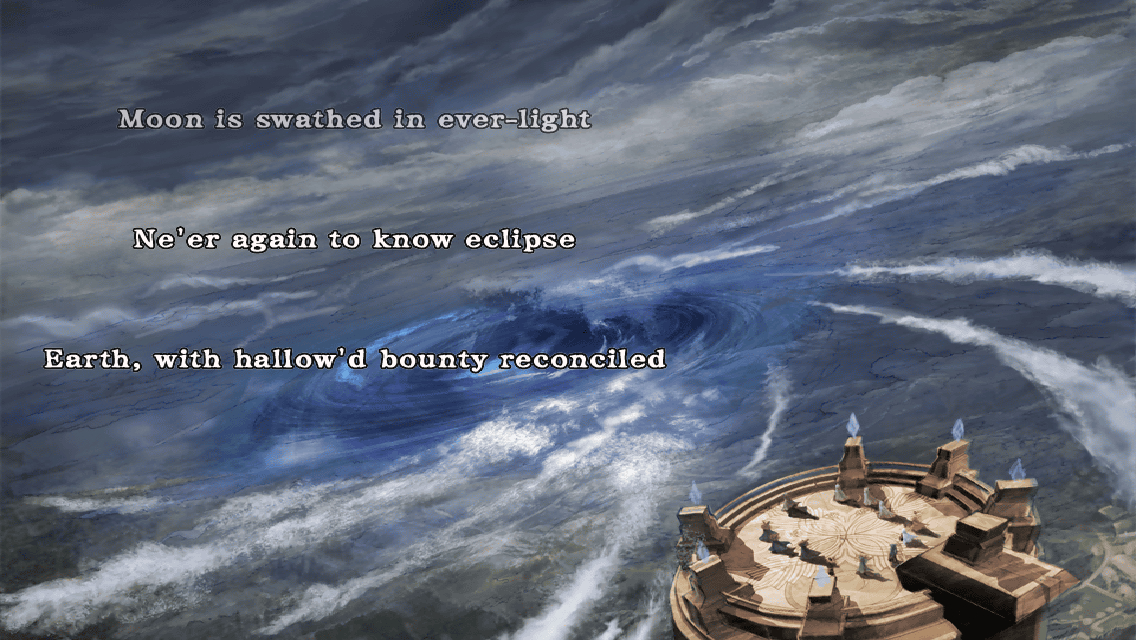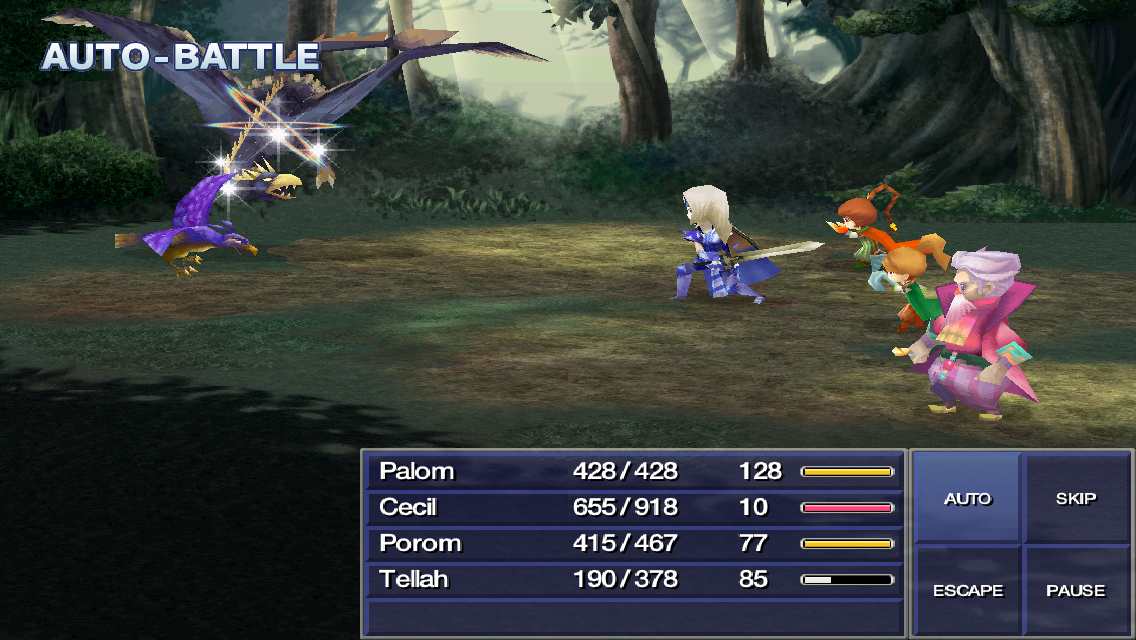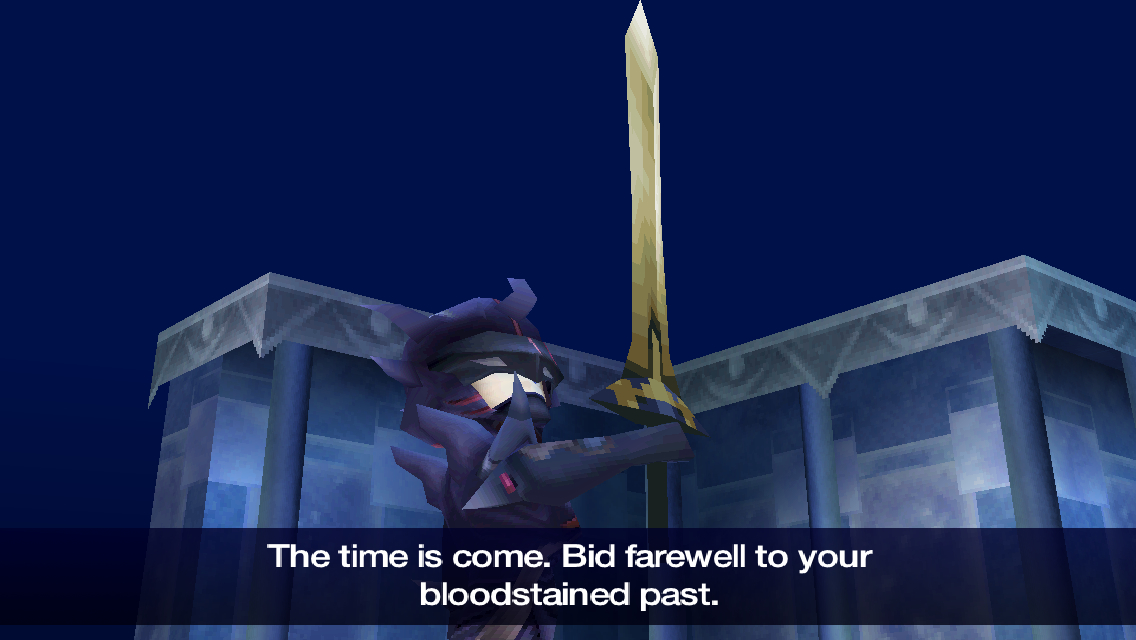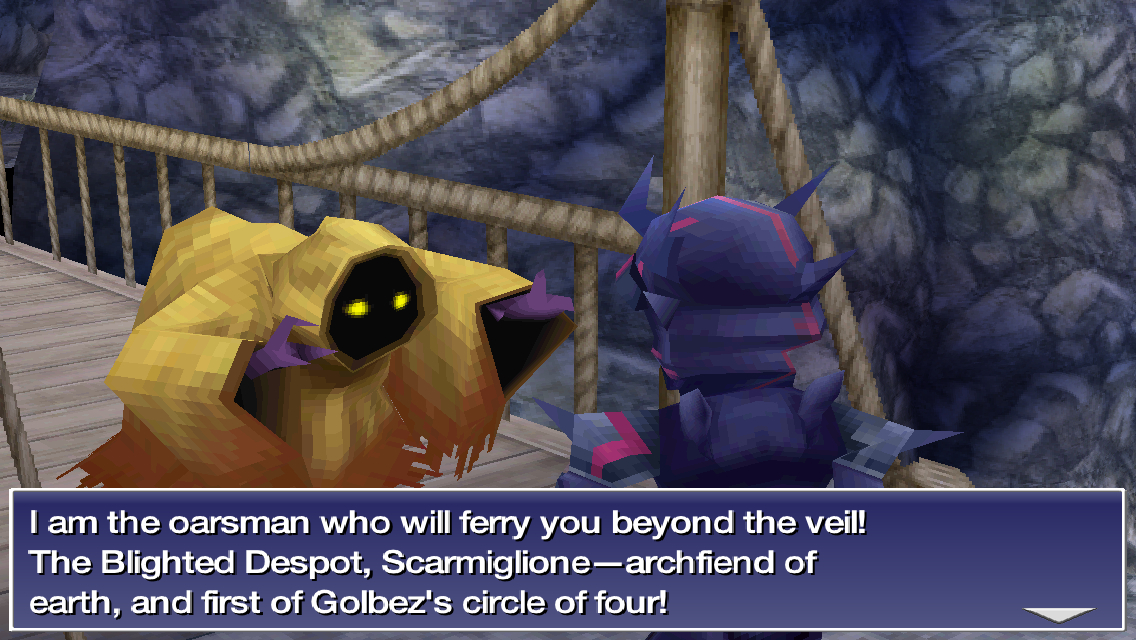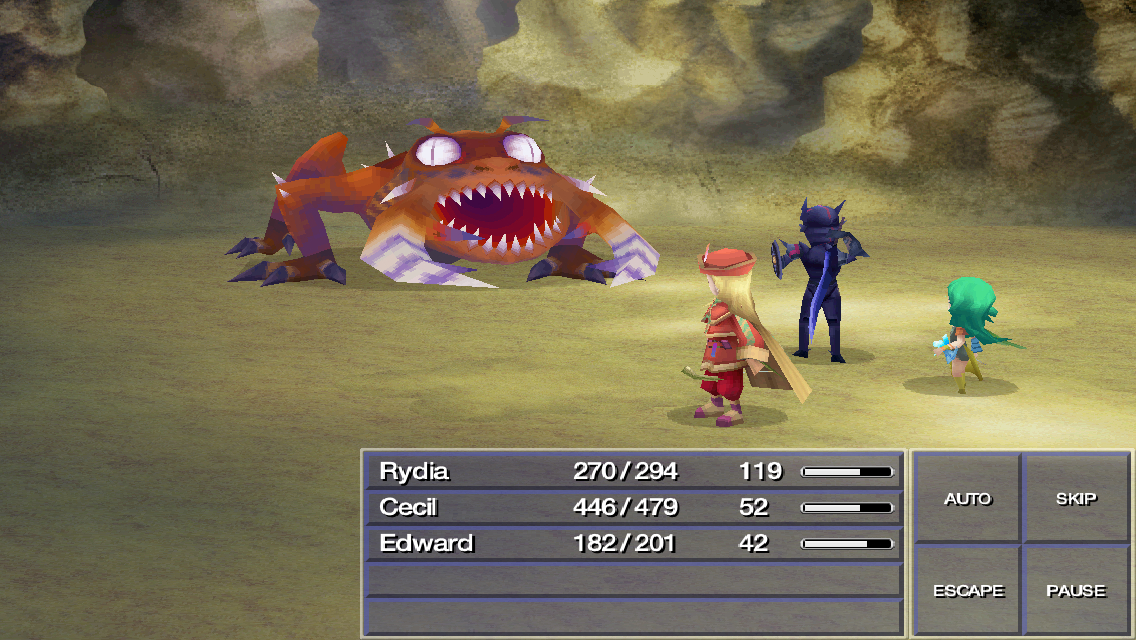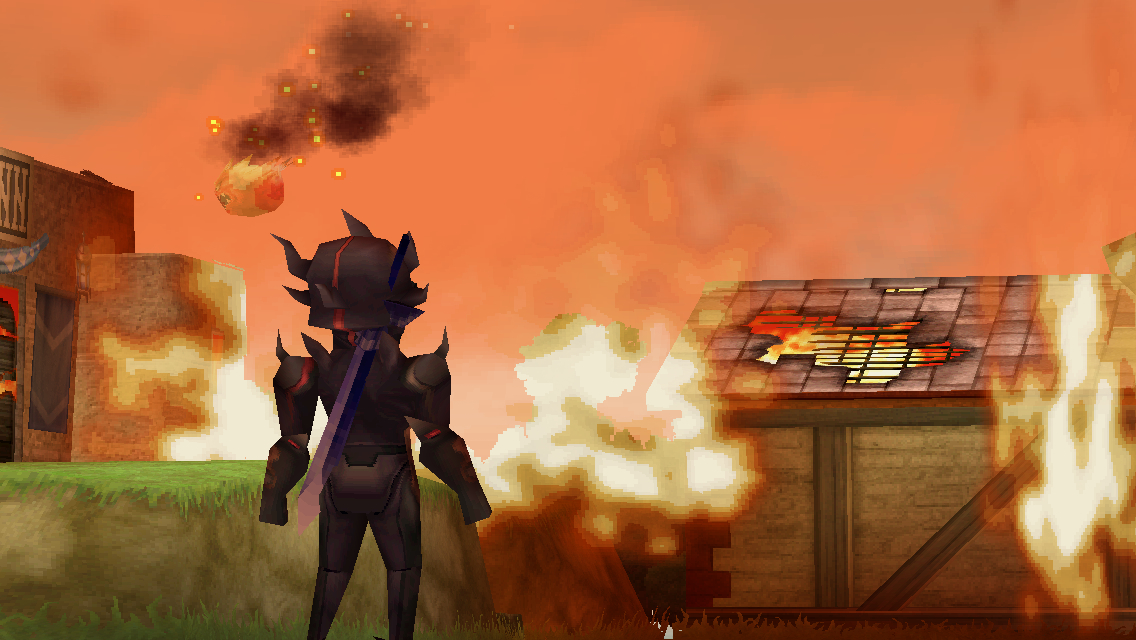 Hello, gentle readers, and welcome to the RPG Reload, the weekly feature where we keep every severed animal tail we find. Each week, we take a look at an RPG from the App Store’s past. It’s a bit of reflecting, a bit of revisiting, and a chance to take a deeper dive than our reviews typically allow us. The RPG world is a wide and diverse one, and I try to present a reasonably balanced selection from week-to-week. To help me with that, I turn the choice to you fine folks once per month. All you have to do is tell me your suggestion in the comments below, by posting in the Official RPG Reload Club thread in the forum, or by tweeting me at @RPGReload. I’ll randomly choose a winner at the appropriate time, and plenty of fun will be had by all. Why, this very article you’re reading is one such reader’s choice! In the first week of June, this happiness could be your happiness, and all you have to do is say the name of a game. Pretty easy!
Hello, gentle readers, and welcome to the RPG Reload, the weekly feature where we keep every severed animal tail we find. Each week, we take a look at an RPG from the App Store’s past. It’s a bit of reflecting, a bit of revisiting, and a chance to take a deeper dive than our reviews typically allow us. The RPG world is a wide and diverse one, and I try to present a reasonably balanced selection from week-to-week. To help me with that, I turn the choice to you fine folks once per month. All you have to do is tell me your suggestion in the comments below, by posting in the Official RPG Reload Club thread in the forum, or by tweeting me at @RPGReload. I’ll randomly choose a winner at the appropriate time, and plenty of fun will be had by all. Why, this very article you’re reading is one such reader’s choice! In the first week of June, this happiness could be your happiness, and all you have to do is say the name of a game. Pretty easy!
Well, this week’s entry is coming up sooner than I had expected, to be honest. There was no doubt that I would get to Final Fantasy 4 ($14.99) sooner or later on my own, but we haven’t even done Final Fantasy 3 ($14.99) yet. Such is the unpredictable nature of the reader’s choice, my friends. But you know, it’s okay, because I can talk about Final Fantasy 4 wherever and whenever it’s needed. This is, of course, one of the most famous entries in the hit Final Fantasy series, and tied for the most remakes and re-releases, if my count isn’t off. The fourth installment in the series, the first to release on a 16-bit platform, the one that introduced the ATB system, and the game where the confusing American numbering first reared its head, Final Fantasy 4 is in a lot of ways a perfect snapshot of a chaotic franchise. While its path was somewhat different inside and outside Japan, it remains a beloved classic worldwide. Like many people, I have a hard time separating out my nostalgia for this game, but I’m going to try in this article, because there are plenty of places you can read the usual praise for it.
Final Fantasy 4 was initially released in North America in 1991 under the name Final Fantasy 2. The first Final Fantasy had been localized so long after its Japanese release that there wasn’t time left in the Nintendo Entertainment System’s viable lifespan to catch English gamers up. Rather than confuse North American customers, Square renamed the game Final Fantasy 2, something that would surely never come back to bite them in the hindquarters. It took a lot of time and re-releases, but I think at this point most everyone knows that this wasn’t the first game to be named Final Fantasy 2. More interesting is that it also wasn’t the first game to be named Final Fantasy 4. A game under that title was in development for the 8-bit Famicom, and it was 80% complete at the time of its cancellation, according to Final Fantasy creator Hironobu Sakaguchi. What we know as Final Fantasy 4 today and what we knew as Final Fantasy 2 yesterday was actually Final Fantasy 5 the day before that. When the 8-bit follow-up to Final Fantasy 3 was canceled, the name and some of the ideas were transferred over to this game, leaving the Final Fantasy 5 moniker free for the best game in the series to claim.
All that messy naming business aside, Final Fantasy 4 had a surprisingly straightforward development. After some initial indecision about the battle system that led to Hiromichi Tanaka leaving the project in favor of his own Secret Of Mana ($7.99), the game’s main ideas came together fairly quickly. Taking the director’s chair for the first time, Takashi Tokita wanted to make a game that brought together everything he thought was great about the series so far. From Final Fantasy ($7.99), he brought in the idea of four elemental fiends to act as adversaries for the heroes. Though its other merits are arguable, Final Fantasy 2 ($7.99) clearly had the biggest narrative focus of the games up to that date, something Tokita wanted for the fourth game. Finally, the job system in Final Fantasy 3 had been a big hit, and Tokita wanted some vestige of that in his game, as well. Coming from a theater background, Tokita’s flair for the dramatic is hard to miss in the scenario he wrote. Granted, like most Final Fantasy games, it spends most of its time riffing on Star Wars, but its cast and certain parts of its story are among the most memorable of the series, so he obviously did something right.
At least equally important as the melodramatic story was the game’s new combat system. The Active Time Battle system, created by Hiroyuki Ito, is among the most influential RPG battle systems of all time. While the idea of going completely real-time had been shuffled off to a different project, the developers clearly wanted something a bit more fast-paced than the methodical turn-based system employed in the first three games. The idea of infusing the turn-based battles with real-time elements was nothing short of brilliant. It gave the combat a feeling of speed and tension while maintaining the strategical merits of a turn-based system. Where did they ever get the idea for that? In an interview conducted by Jeremy Parish in 2011, Takashi Tokita said that Ito had gotten the idea from watching a Formula One race, of all things. As he watched the cars zoom around the track passing each other, he thought it would be interesting if each battle participant in the game also moved at a different speed. In a series that liked to kick the desk over with each new game, the ATB was so great that it stuck around for the next five games. It still makes plenty of appearances today, most recently in DeNA’s Final Fantasy Record Keeper (Free).
It took the team of 14 members about one year to make the game, with its Japanese release date coming in July of 1991. Mere months later in November of 1991, the English version was released for the newly-launched Super Nintendo Entertainment System. The infamous translation was handled by a non-native English speaker, which resulted in awkward phrasings and esoteric vocabulary a-plenty. But hey, where would we be today without “spoony bard"? The American SNES version is actually unique to that region and hardware. For many years, it was believed that it was a localization of Final Fantasy 4 Easy Type, a Japanese re-release that simplified some of the language and made the game a bit easier all around. But Final Fantasy 2 and Final Fantasy 4 Easy Type have several differences between them, as well. Whatever the case, the American version was made a lot easier and simpler to account for English players never experiencing the second and third Final Fantasy games.
While its stature is different these days, Final Fantasy 4‘s initial release barely edged out Final Fantasy 3‘s in sales in Japan, while it was a somewhat modest success in North America. Part of that is certainly down to eating its own tail with the Easy Type release, but the statistics favor the odds: Final Fantasy 3, Final Fantasy 5 ($14.99), and Final Fantasy 7 are the three biggest sales jumps for the series. In spite of that, the game has seen an incredible amount of remakes and re-releases. After the SNES and Easy Type versions, the next release was on the first PlayStation. This first port, done in 1997 by the wizards at Tose, was terrible, suffering from framerate issues, glitches, and insufferable loading times.
An improved PS1 version was released as part of the Final Fantasy Collection in Japan. While the first release was bad enough that it was left out of the English Final Fantasy Anthology set, the second release was easily the best of the bunch. It was bundled with an awful port of Chrono Trigger ($9.99) and released in English as Final Fantasy Chronicles in 2001. Not only was this the US’s first chance to play the game at its original difficulty level and Europe’s first chance to play it at all, it also had a new translation that was much improved over the original. It still kept the “spoony bard" line, however. Some things are sacred.
The game’s next release was on a Japan-only portable console, the Bandai Wonderswan Color. Releasing in 2002, this version had some slight graphical changes and heavily downgraded sound effects and music. As it was done by Tose, it also suffered from some unusual bugs. They also handled the next release, a Game Boy Advance version that added significant new content. It released in Japan and North America in December 2005, with a European release in 2006. Although the new content was really cool, allowing you to select your final party from among the living members and even do character-specific dungeons, this release was also riddled with bugs, wreaking havoc with the ATB system’s timing and messing up the back row damage calculations. The European version had many of the bugs fixed, and this version got a release in Japan. North Americans had to make do with what they had, but it’s okay because as you’ll see, we’re never that far away from the next Final Fantasy 4 re-release.
Thankfully, Tose wasn’t anywhere near this next one. Final Fantasy 3 had received a 3D remake on Nintendo’s DS system and had sold better than expected. Square Enix decided to press on with a 3D remake of Final Fantasy 4, this time under the watchful eyes of many of its original creators. To date, it’s probably the most extensive remake Square Enix has done for a Final Fantasy game. Not only was the game realized as a fully polygonal experience, it had voice acting for all of the main characters, some new mini-games, and significant changes both to the character development and the enemy behaviors. Perhaps realizing that the game had been released a few too many times, Tokita opted to make a game that would mess with players who were intimately familiar with the original version. The result was a very difficult game that seemed to garner as many complaints as it did praises. This version of the game has its own largely unique English translation, and none of the extra content from the GBA version. It does, however, feature an expanded story that adds in hooks to the unfortunate sequel, The After Years ($14.99). The DS version of the game released in 2007 in Japan and 2008 elsewhere.
We’re on the home stretch now, I promise. There are just three more releases of note. The first is 2011’s Final Fantasy 4: The Complete Collection on the PSP, which uses the art style from the PSP versions of Final Fantasy 1 and Final Fantasy 2 to recreate the Game Boy Advance version’s content. Then, in December 2012, the 3D remake was released on iOS and Android with some slight changes. Notably, this version includes a new lower difficulty setting. Finally, late last year the mobile version was ported to Windows PCs with no additional content. The debate rages on as to which Final Fantasy 4 is the definitive one, and it’s one I don’t intend to comment on here.
The iOS version presents the game in a higher resolution than the DS was capable of, but the textures are still mostly the same chunky pixels. The worst part is that that whole thing runs at a terrible framerate, a quality that unfortunately extended to the PC release. On the good side, the iOS version includes support for MFi controllers and iCloud, and you can stretch it out to fill most screens. Hilariously, literally the first image of hero Cecil is accompanied by a typo, calling him the “Load Captain" of the Red Wings. It must be hard-coded in, considering it hasn’t been fixed in any subsequent updates. Otherwise, as long as the framerate doesn’t bother you, this is probably the best version of the DS remake and a competent enough way to enjoy Final Fantasy 4. Square Enix has been swift to patch any issues with this one, so it’ll probably be safe for a while.
Here’s the thing, though: as much as I love Final Fantasy 4, it’s difficult for me to explain why. I mean, I can make the argument that for English gamers, it was a big leap over the first game in both presentation and story ambitions. Certainly, there wasn’t much like it at the time. But I suspect by now, the majority of people who have played Final Fantasy 4 have done so in the context of the series on the whole, and it’s a lot less impressive when we look at it that way. The story is ridiculously over the top, with characters practically bravely sacrificing themselves at the drop of a hat. It’s not the longest game, and the plot is so densely packed that you scarcely meet a character before they’re shuffling out of the party either due to apparent death, kidnapping, or betrayal.
That’s likely in service to the gameplay itself, where your party fits five members but the cast encompasses many more. If someone wants to come in, someone has to go out, and if they’re going out, what could be more dramatic than dying for the sake of the rest of the team? This reaches its crescendo when Cid exits the party by jumping out of a flying airship with TNT strapped to himself, intending to detonate it to close an opening behind the rest of the party. This time, even the characters themselves don’t believe Cid’s actually gone. Yes, I know they’re doing that thing where they’re trying to say how stubborn and resourceful he is, but after the constant parade of death, it almost feels like a moment of lampshade-hanging. Let’s not even get started on the absurd twist with Golbez. It flies a little too close to the sun with that plot beat, in my opinion, but it’s once again not the last time Final Fantasy would visit that particular well.
I enjoy the battle system quite a bit, and there are a lot of interesting puzzle-style fights in the game, but those things are not unique to Final Fantasy 4, with later installments improving on those things to differing extents. Outside the battles, things really look bad. Not only can you not control your party composition, you have no input into how the characters even develop. One person’s Cecil is the same as anyone else’s, as is their Kain, Rosa, Rydia, Edge, and so on. You can customize their equipment, of course, but that’s a very small thing in the scope of the game since most of the time you’re just going to equip what’s best. On top of that, the exploration is very linear. The game will use the story to gate you off where it needs to, and while you get the usual means of traveling the world later in the game, there aren’t many optional things to be found in the world or out of it. The first half of the game is essentially a straight walk. JRPGs are generally known for being more linear than their WRPG cousins, but Final Fantasy 4 carries that to an extreme, essentially becoming no more of an RPG than a dark ride at Disneyland. Final Fantasy 13 is often maligned for its extreme linearity, but the fourth game is even more guilty of it yet somehow called out only a fraction as often.
Both modern remakes of the game address this elephant in the corner in their own ways. The Advance version allows you to choose your party near the end, giving you one last gasp of agency. The jobs and abilities of each character may be locked, but if you can choose among them, you can customize. The 3D remake chooses to tackle it the opposite way with the addition of augments. These are items you’ll find around after certain story beats. Using them on a character imparts them with a new ability that they wouldn’t normally have access to. Interestingly, as each character takes their final leave from the party, they’ll grant you some augments based around their abilities. How many you receive depends on how many you gave them. You’ll always get at least one, but if you want the really juicy stuff, you have to invest at least two augments in them.
There are only so many to go around, and you’ll want to keep some for your final party, so you really have to think about whose ultimate abilities might be most useful. Hint: not Edward’s. I’d go so far as to say that if you’re playing the 3D remake on its original difficulty setting, which is called ‘Hard’ in the mobile version, you need to make the right investments if you want to beat the game. This makes the game more engaging for returning players, to be sure. For a rookie, it’s an absolute nightmare. If you don’t know when or where a character will leave, how do you know who to give which augments to? If you don’t know who will comprise your final party, how do you know who to give the good ones to? Well, I guess you can check an FAQ, which is just lots of fun. You might be able to cruise through the easier difficulty setting in the mobile version without taking the optimal augment path, but it’s still going to be pretty tough. Certainly tougher than the original version. So even the 3D remake fails in its own way. Why do I love this game?
I love Final Fantasy 4 because it is the pure essence of Final Fantasy, that’s why. I find it amusing in hindsight that in following this game in America, Square Enix felt they needed to cook up Mystic Quest to teach English players how to play a Square RPG when that’s precisely what Final Fantasy 4 does. It has a taste of the drama and the melodrama, the tropes and the oddities, the awesome set pieces and even moments of utter goofiness. Fantasy crashes headlong into sci-fi and right back out the other end again. It has an amazing soundtrack full of marches, stirring bombast, quiet melodies, and leitmotifs galore. It gives you a step-by-step crash course in the typical job classes of the Final Fantasy series, forcing you to learn their abilities and make effective use of each one. It also teaches you about the character types that usually populate Final Fantasy games, and basic series jargon like chocobo, black mage, and so on.
The game revolves around Cecil, and in doing so explains many important things about the series. The constant themes of light pushing back darkness, of family and friends, of forgiveness and the futility of revenge. Mechanically, the ever-present Cecil also demonstrates how to use both an offense-heavy character and a defensive one. The four fiends might as well have neon signs pointing out the way elemental strengths and weaknesses work in the series. The first of the batch even forces you to learn back attacks, the row command, and how to handle the undead. Perhaps more than any other Final Fantasy, what Final Fantasy 4 is really about is Final Fantasy. I may think Final Fantasy 5 is the better game, and I certainly think Final Fantasy 6 ($14.99) has a better story, but I don’t think you can learn as much about what this series means from any game better than you can from this one. It’s Introductory Final Fantasy, delivered in far less condescending fashion than Square’s more deliberate attempts. That’s why I love it, I think. That, and I played it when I was in junior high school. Every scientist knows that things are objectively better if you first consumed them in junior high school. Wheel Of Time rules, A Song Of Fire And Ice drools!
Ahem. Anyway, that’s what I think about Final Fantasy 4. I want to hear your thoughts, though. Please post a comment below, drop into the Official RPG Reload Club thread in the forums, or tweet me at @RPGReload to share your memories or opinions on this well-trodden classic. Also, if you haven’t done so already, don’t forget to check out the latest episode of the RPG Reload Podcast. Eric Ford and I were joined by one of our awesome readers to talk about King Of Dragon Pass ($9.99). In spite of tons of technical problems, I think it’s still worth listening to. As for me, I’ll be back next week with another RPG from the past. Thanks for reading!
Next Week’s Reload Hint: I hope I don’t forget my lines.

